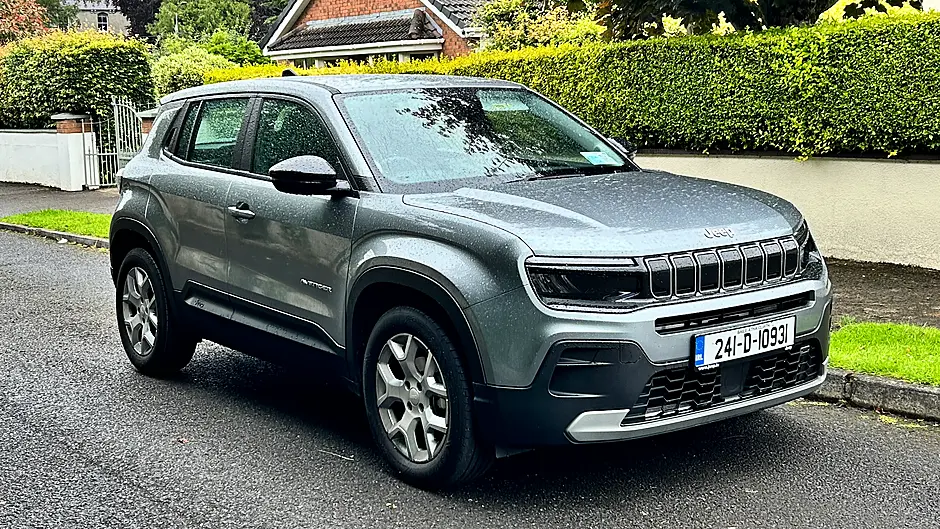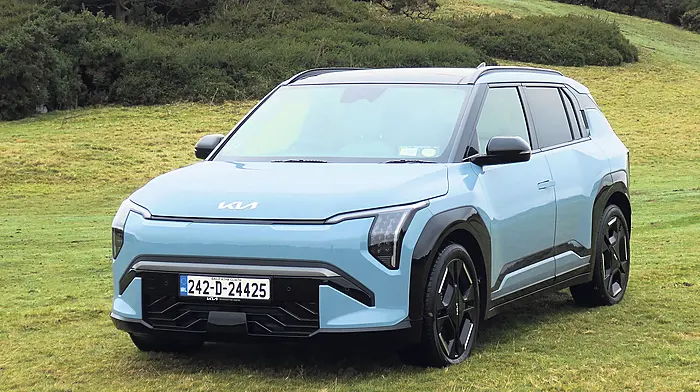BY BRIAN BYRNE
WHEN the Jeep Avenger was launched in Ireland last September, it came only as an electric model. The brand’s plan when they introduced this Europe-designed model was that it would only be an EV, as Jeep had promised an all-electric line-up by 2030. However, in line with equivalent other Stellantis Group models from other marques, a petrol version became available.
Recapping my overall thoughts on the Avenger from my EV version experiences, this smallest Jeep is a good looker, the squared shape and extended wheel arches suggesting an efficient use of space for those inside. The traditional grille in this combustion-engined version now has an air intake role again, while the very short rear overhang adds quite a pleasing back view.
![]()
Simplicity is the keynote of the interior. A tidy dashboard design, even if the infotainment centre screen floats quite high off the top. That item’s widescreen format offers useful views in Carplay navigation mode, and in its home state is graphically well designed. Driver information is coherent and easily understood at a glance. I have mentioned before the practical piano-style switches for climate control and the clarity of the switchgear on the steering wheel. All good.
Though the external shape suggests a larger car, it’s worth remembering that this is a B-segment offering, in reality a slightly larger urban hatchback with SUV looks. So for best comfort, four people is the optimum occupancy. And they’ll have a somewhat larger boot space for their chattels than in related hatchback models.
![]()
The quiet swish of the EV experience is replaced by the muttering of a 1.2 3-cylinder petrol motor, rising to a growl when pushed and outputting just 100hp compared to the electric car’s 156hp. The petrol Avenger is 354kg lighter than the EV version, thanks to not having that large battery under the floor, so the fewer horses didn’t really impact acceleration. As both versions are FWD, the lower weight didn’t actually make much difference to the handling, either, though the different centre of gravity could be felt.
My review car had the 6-speed manual gearbox, which in itself is neat in use and has a nice tall top ratio for motorway cruising. I did have an issue, which is common to other right-hand drive manual cars using this Stellantis platform (and its PSA Peugeot-Citroen predecessor), in that anyone with a wider foot can annoyingly clip the footrest when pushing down the clutch. This has been a matter for RHD customer discussion over a number of years in other Stellantis brands, but seemingly not enough to cause the maker to change the footrest width or placing. There’s a dual-clutch mild-hybrid automatic option available in the Avenger which obviously eliminates this, and that would be my recommendation to anyone thinking of buying the car. All said, us big feet do learn to attack the clutch at a slightly different angle, but it still feels awkward.
![]()
Though primarily an urban-centred car, this is a Jeep, and so does come with a slightly raised ride height and various traction control-managed drive settings to deal with more rugged road and weather conditions. For managing downhill off-road slopes, hill descent comes as standard in the system.
I liked the Avenger’s place in the current EV competitive market when I first reviewed it. I like the car even better because of the sensible decision to extend the powertrain choice for those not yet ready to go the full electric route. It is all-European, but there’s an American iconicity in the Jeep name and styling that should, the maker hopes, bring enough customers in Europe to keep the brand viable here.







